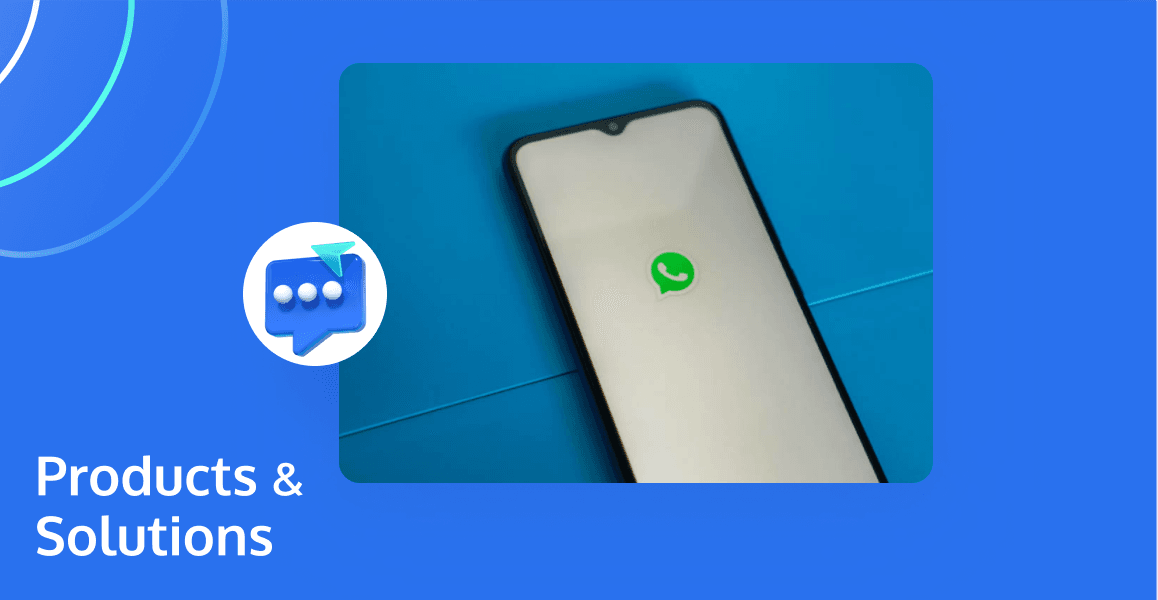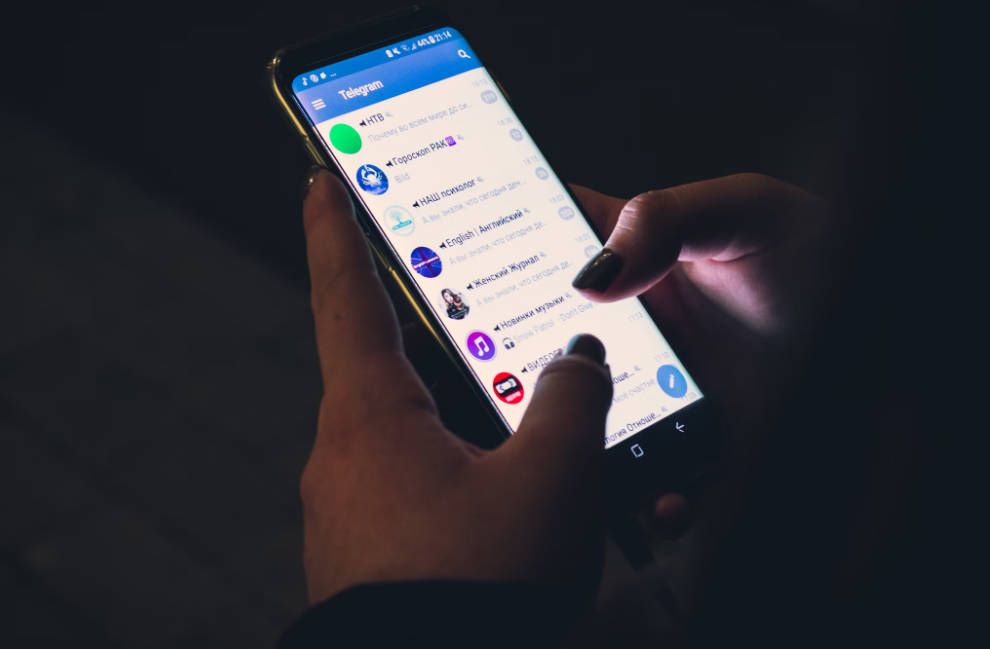
In today’s digital era, instant messaging opens the door to one of the most dynamic and essential communication tools. This technology allows for the rapid exchange of messages through a networked platform, offering an immediate and convenient way to connect with others across the globe. With its blend of text, voice, video, and media sharing, instant messaging has transformed how we interact, both personally and professionally.
If you're curious about the intricacies of instant messaging, you will get what you want here. We'll look into the mechanics of instant messaging, explore popular platforms, and even guide you through creating your own messaging platform with an instant messaging API. Read on to learn more!
What Is Instant Messaging?
Instant messaging (IM) is a method of communication that allows users to send text messages in real-time over the internet. Unlike email, IM enables conversations to occur swiftly, mirroring face-to-face interactions more closely. This technology has expanded beyond simple text exchanges to incorporate a variety of features, making it a versatile tool for personal and professional communication. Key features of instant messaging include:
- Real-time Text Messaging: Immediate transmission of messages, allowing for live conversation flow.
- Group Chats: Capability to communicate with multiple people in a single chat interface, facilitating team discussions or family conversations.
- File Sharing: Allows users to send documents, images, videos, and other files directly through the messaging interface.
- Voice and Video Calls: Some IM platforms offer voice and video calling features, enabling users to make calls over the Internet.
- End-to-End Encryption: Many modern IM services include end-to-end encryption to secure messages from unauthorized access.

How Does Instant Messaging Work?
Instant messaging (IM) technology allows users to communicate in real-time over the internet. It starts when a user types a message into an IM application and hits send. This message is then encrypted and transmitted to the service's server. On the server side, the message is processed: the server identifies the recipient, checks their availability, and routes the message accordingly. If the recipient is online, the message is sent directly to their device, where it is decrypted and displayed within their IM application, often accompanied by an alert.
This technology relies on a complex interplay of protocols and encryption to ensure messages are delivered swiftly and securely. Protocols like XMPP (Extensible Messaging and Presence Protocol) and encryption standards such as TLS (Transport Layer Security) are integral, protecting the data from interception and ensuring privacy.
What Can Instant Messaging Do?
Instant messaging (IM) platforms have transcended their original purpose of simple text communication, morphing into comprehensive tools that cater to a wide spectrum of communication needs. At their core, IM services facilitate real-time text messaging, but their capabilities extend far beyond. Users can now share files, engage in voice and video calls, participate in group chats, and even share their screens during calls. This evolution has made IM indispensable for both personal connections and professional collaborations, allowing for seamless information exchange and enhanced interaction through features like emojis, stickers, and GIFs.
Moreover, advanced features such as end-to-end encryption, presence information, and customizable notifications have significantly improved the user experience. IM platforms also integrate with chat bots for automated assistance, offer options for location sharing, and some even include payment functionalities. These developments reflect the dynamic nature of digital communication, making instant messaging a vital component of daily online interactions. With each innovation, IM services continue to offer more engaging, secure, and versatile communication options, aligning with the modern user's demands for convenience and multifunctionality.
Benefits of Using Instant Messaging
Here are some key benefits:
- Enhanced Productivity: In professional settings, IM can boost productivity by reducing the time spent on arranging meetings and waiting for email responses.
- Improves Team Collaboration: Group chats and channels can enhance team collaboration by providing a space for brainstorming, quick updates, and maintaining a shared knowledge base accessible to all team members.
- Encourages Informal Communication: The informal nature of IM can foster a more relaxed communication environment, encouraging team members to share ideas and feedback more freely.
- Privacy and Security: With end-to-end encryption available on many platforms, IM can offer a secure way to transmit sensitive information, ensuring that conversations remain private.
- Reduces Workplace Interruptions: Unlike phone calls or face-to-face meetings, instant messaging can be less disruptive to workflow, allowing recipients to respond at a convenient time without breaking focus from their current tasks.
Popular Instant Messaging Apps
Some popular instant messaging apps are as follows:
- WhatsApp: Globally used for its simplicity, offering end-to-end encryption, voice and video calls, group chats, and media sharing.
- Facebook Messenger: Integrated with Facebook, supports text, rich media interactions, voice and video calls, and even gaming.
- WeChat: Dominates in China, blending messaging with social media, payment services, and mini-apps.
- Telegram: Favored for security with encrypted messaging, large group chats, and broadcasting channels.
- Slack: Tailored for workplace communication, featuring organizational channels, app integrations, and collaboration tools.
- Microsoft Teams: Combines chat, video calls, and integration with Office tools, designed for business collaboration.
How to Create an Instant Messaging Platform With Instant Messaging API?
You can follow the steps below to create an instant messaging platform with an API.
- Defining Requirements: Identify your audience, essential features (like text messaging, file sharing, voice/video calls), and security needs.
- Choosing an API: Research and select an API (like Tencent RTC) based on features, pricing, and documentation quality.
- Planning Architecture: Decide on frontend and backend technologies. Ensure your plan accommodates real-time data and scalability.
- Developing the Application: Set up your development environment as per the API's guide, integrate messaging functionalities, and manage user authentication.
- Testing: Conduct functional, performance, and security tests to ensure reliability and scalability under load.
- Launching and Iterating: Start with a beta launch, gather user feedback, and iteratively refine your platform.
Conclusion
In essence, this article has delved into the multifaceted world of instant messaging, looking into its workings, capabilities, and the myriad benefits it brings to digital communication. It also navigates through the creation of an instant messaging platform using APIs, shedding light on a technical pathway for those inclined towards development. By assimilating the insights and guidance offered, you not only appreciate the intricacies and advantages of instant messaging but also obtain the knowledge to venture into creating your own platforms, potentially transforming the digital communication landscape.
FAQs
What Are the Common Types of Instant Messaging?
Instant messaging encompasses various forms, including one-on-one chats, group messages, and channels or forums for larger audience communication. Other types include voice and video messaging, file sharing, and even collaborative platforms integrating task management and scheduling. These categories serve different purposes from casual conversations to professional collaborations.
Is Instant Messaging the Same as Texting?
Instant messaging and texting share the primary function of sending messages in real-time but differ in platform and connectivity. Texting, or SMS (Short Message Service), relies on a cellular network and is tied to a phone number. Instant messaging, however, operates over the internet through various platforms (apps or web services) and offers richer features, such as group chats, file transfers, and multimedia sharing, making it a more versatile and internet-dependent form of communication.
What Factors Should Be Considered When Selecting an Instant Messaging API for Integration?
When selecting an Instant Messaging API, consider compatibility with your platform, feature set (like multimedia support, group chats, encryption), scalability to handle user growth, and ease of integration. The cost model, reliability, and responsiveness of customer support are crucial. Also, evaluate the API’s documentation for clarity and comprehensiveness, ensuring it aligns with your project's technical needs and long-term communication goals.
If you have any questions or need assistance online, our support team is always ready to help. Please feel free to contact us or join us on Telegram.


